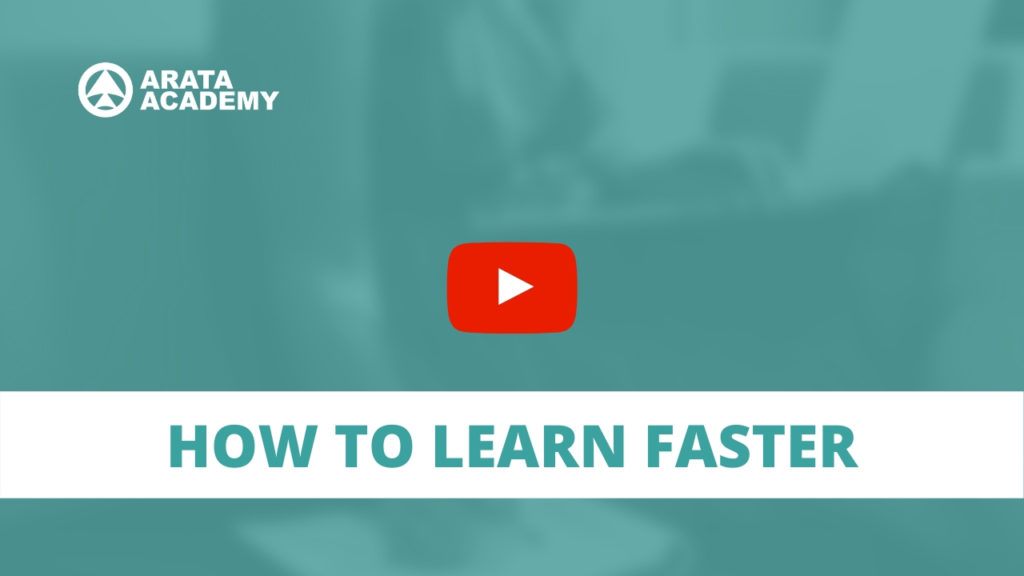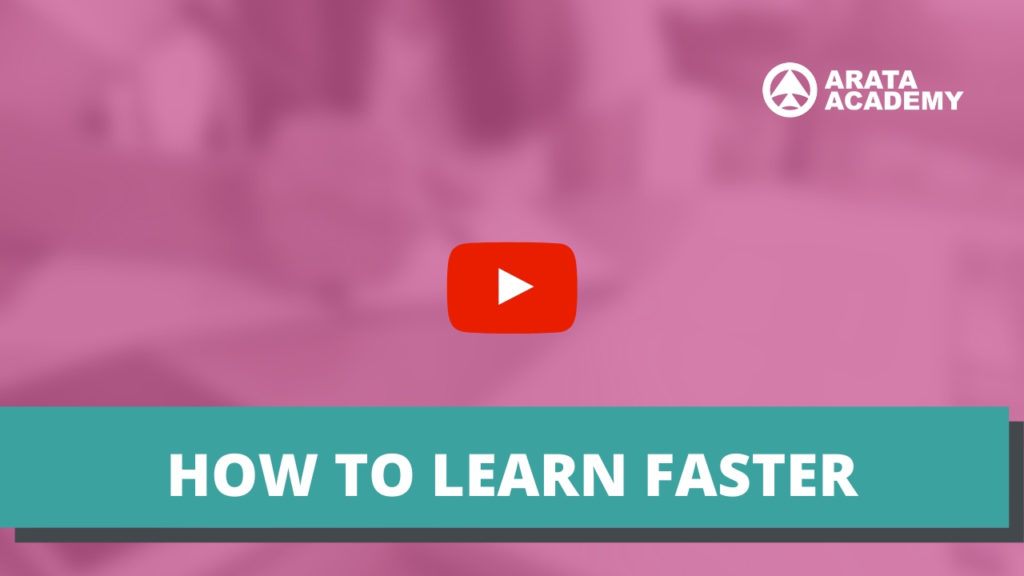Study Arata. In the last few years, people from all over the world have successfully learned new subjects quickly by using a four step method known as the Feynman Technique.
This way of studying was created by Richard Feynman, who won the 1965 Nobel Physics Prize for his studies in quantum electrodynamics.
There’s nothing new about the Feynman Technique, but the method has become more popular in recent times. One of the people responsible for this renewed interest in this study method is Elon Musk, one of the most inventive, controversial and successful entrepreneurs in recent memory.
To get how the technique works, you need to understand that Feynman was critical of the way most people study, by prioritizing memorizing over reasoning. Feynman stressed that knowing the name for a thing is very different from knowing the thing itself.
It was to correct that mistake of memorizing instead of learning that Feynman developed a simple four step method for students to learn any concept better. The idea is that the students unpack an idea in a simple way to then understand and rebuild that same idea.
The Feynman Technique adapts to the brain’s way of learning.
The main reason the Feynman Technique yields excellent results is that it is aligned with the way our brain learns.
Instead of focusing on memorizing concepts, names, dates and numbers, this method prioritizes a deep understanding of the topic. In order for you to say you have gained a deep understanding of a given topic, you need to be able to explain that topic to other people. It works because only someone with a deep understanding of a topic can explain what they know to others.
Think, for instance, of a topic on which you’re an expert. It could be an academic subject, or a hobby, anything. You would probably be able to explain that topic to other people, right?
Now think of a topic on which you’re not an expert. Quantum electrodynamics, for example.
Do you think you could teach quantum electrodynamics to other people ?
Probably not. Even if you managed to memorize a few basic concepts, it’s safe to say that if you tried to teach other people about this topic, they probably wouldn’t understand a thing.
That’s why the Feynman Technique works so well. The method allows you to gain such a good understanding of the topic that you’re then able to explain it, as if you were a teacher of that subject.
The four steps to learn anything with the Feynman Technique
To implement the Feynman Technique, you need to follow four simple steps.
First, you need to pick a topic. Then, you need to teach this topic to a child. Thirdly, you need to identify the flaws or gaps in your understanding. And finally, you need to review and simplify what you’ve learnt. Sound easy?
When people hear about a study method that was invented by a Nobel Prize winner who worked with quantum electrodynamics, they immediately think it’s going to be complicated/ out of reach. But one of the strengths of the Feynman Technique is actually its simplicity.
So let’s go through each of the four steps separately. Remember, you’ll need a pen and paper to practice this method.
Step 1: Choose a topic.
The first step is to clearly define what you want to learn.
For this first step, try to be very specific. Don’t choose something very broad like “Mathematics”, instead, go for a topic with a narrower focus like “Combinatorial Analysis”.
You can be even more specific and choose just one concept within “Combinatorial Analysis”.
Take a sheet of paper and write down your chosen topic at the top.
Then, write down everything you know about that topic on your sheet of paper. Use an extra page if you need to, but ideally the topic should be so specific that it doesn’t take up that many pages.
Every time you learn something new as we go through the next three steps, add that piece of knowledge to your notes.
Now be sure to make these notes in your own words. Don’t copy out instructions from books, professors or the Internet, and don’t use technical jargon.
Step 2: Teach the chosen topic to a child.
The second step in the Feynman Technique is to teach the chosen topic to a child.
Take your page of notes and start explaining the topic to a child. Ideally, you will really have a seven-to ten-year-old child in front of you. In case that’s not an option, you can pretend you’re teaching someone from that age group.
The most important thing isn’t the child’s physical presence, but your ability to explain the topic in simple terms. Come up with an explanation so simple that even a child would understand you. To do that, avoid using jargon and focus on the founding principles of your chosen topic.
Of course the child won’t understand you perfectly, especially if you’re dealing with more advanced topics. But the focus of this second step should be on what you’re teaching, not what the child is learning. At the end of the day, you’re the one who’s studying.
At the end of your explanation, you’ll notice that you didn’t understand certain points very well. And these points that you misunderstood bring us to the third step.
Step 3: Identify the gaps in your understanding.
Based on your explanation to the child, you’re going to make a note of the parts of the topic you need to understand better.
Write down where these gaps in your understanding occured and go back to your books to learn those parts better. Add every new thing you learn to your pages of notes.
This is an important step, it’s at the core of this study technique. The details of the topic that you found most challenging to explain are the aspects you need to go over and study harder.
The parts you managed to explain clearly to a child probably don’t require that much revision. You’ve already got a decent understanding of those parts.
What you need to do now is focus on the parts where you’re still lacking a deep understanding. This optimizes your time and helps you prioritize what to study correctly. It also saves you from making the mistake of staying in your comfort zone and going over what you already know.
Ideally, after reviewing the topic, you should be able to explain it to a child again and check if the gaps in your understanding have been filled.
This is the main concept of the Feynman Technique. When you can explain a topic to a child, it means you’ve really learnt what you were studying.
Step 4: Review and Simplify
The final step in the Feynman Technique is to review your work and simplify the language even further. Now, you’re going to write down what you’ve learnt in your own words.
Avoid using jargon or technical terms from books or teachers. Write it out in your own words, in the simple terms you use in your day-to-day interactions.
If necessary, use analogies with actions from your daily routine to further deepen your understanding.
Try to produce a logical text that can be read aloud. If you identify new gaps in your understanding while you’re doing this, go back to Step 3 to review the topic one more time.
Use the Feynman Technique as another tool for your studies.
Imagine how you would perform in your studies or your career if you could learn new things quickly and efficiently.
That’s doable if you start practicing the Feynman Technique and using it as another tool in your study hacks.
To achieve that, remember the standard to determine whether you’ve really learnt something or not is your ability to explain the topic in simple terms, so that even a child would understand you.
Let’s go over the four steps of the technique: choose a specific subject, explain it to a child, identify the gaps in your understanding, review and simplify.
If you think this technique is very basic, remember that it was developed decades ago by a Nobel Prize winner and that it has stood the test of time.
The Feynman Technique is a way of studying that optimizes your time and is very efficient. The technique works as it’s aligned with the way the human brain learns. First you’re going to unpack ideas and then you’re going to build these same ideas up again in your own words.
That being said, you shouldn’t take this method as the only solution to all your study problems. Instead of creating that kind of expectation, think of this technique as another tool you can use to learn new things quickly and efficiently.
If you’d like to find out about other techniques to learn even faster, please take a look at our course How To Learn Faster by visiting this link.

